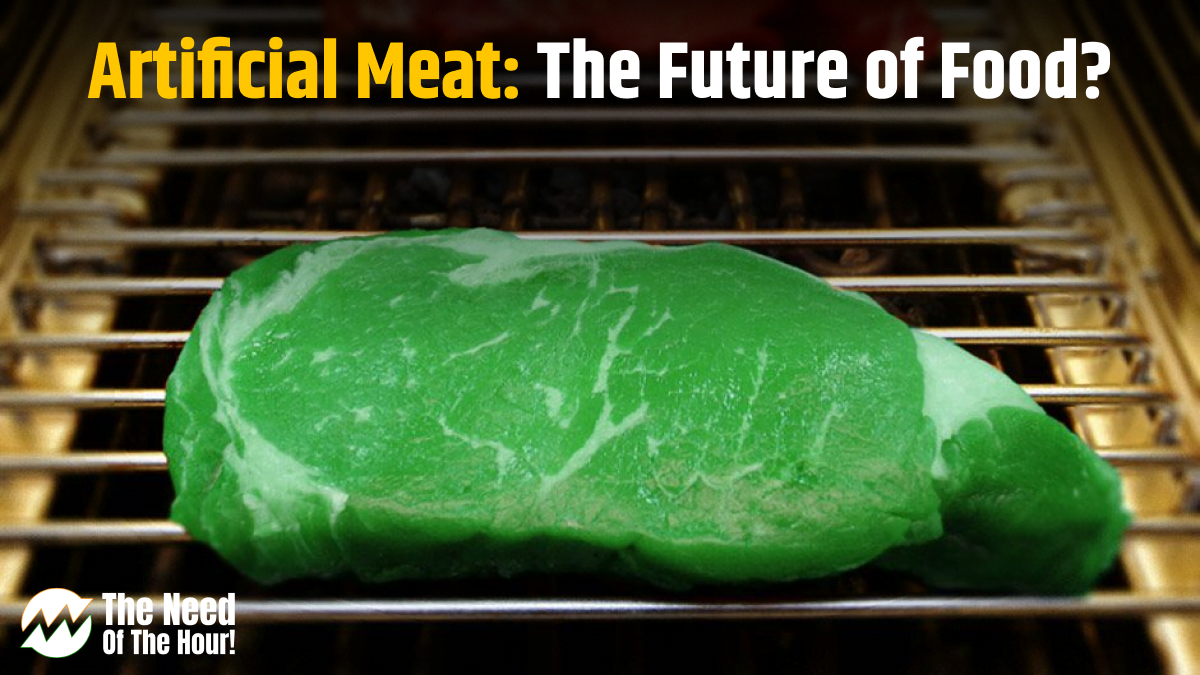Key Highlights:
- Substantial Solution: Artificial meat production can significantly reduce greenhouse gas emissions and land use.
- Ethical Advancements: Lab-grown meat eliminates the need for animal slaughter, appealing to those concerned about animal welfare.
- Challenges Ahead: High production costs and consumer acceptance are major obstacles for lab-grown meat to go mainstream.
Artificial Meat Production
Artificial meat, or lab-grown meat, presents a groundbreaking step towards sustainable and ethical eating. Unlike conventional meat production, which involves raising and slaughtering animals, lab-grown meat is produced by cultivating animal cells in a controlled environment. This method promises to drastically lower the environmental impact of meat production, addressing concerns such as deforestation and greenhouse gas emissions. Additionally, it offers a cruelty-free alternative by eliminating the need for animal slaughter. However, the road to mainstream adoption of lab-grown meat is fraught with challenges, from production costs to consumer acceptance.

A Sustainable Solution to Environmental Concerns
Traditional livestock farming significantly impacts the environment, contributing about 14.5% of global greenhouse gas emissions, causing deforestation, and consuming large amounts of land and water. As meat consumption rises with a growing population, sustainable alternatives are crucial. Lab-grown meat provides a promising solution by drastically cutting resource use. It can reduce greenhouse gas emissions by up to 96% and requires 99% less land and 96% less water compared to conventional beef production. This approach could alleviate many environmental issues linked to traditional meat farming.
Read this also: Hollywood’s Video Game Performers Picket for AI Protections
Addressing Ethical Concerns
Artificial meat addresses ethical concerns by eliminating the need to slaughter animals, thus avoiding the suffering associated with traditional meat production. This appeals to those concerned about animal welfare and offers a more ethical food option for both vegetarians and omnivores. Companies like Memphis Meats and Mosa Meat are leading this innovation, creating meat alternatives that replicate the taste and texture of conventional meat while reducing environmental and ethical impacts.

Overcoming Challenges to Mainstream Adoption
Lab-grown meat faces challenges in mainstream adoption due to high production costs and consumer acceptance issues. Despite a significant drop in price—from $325,000 for a lab-grown burger in 2013 to about $10 per serving today—cost parity with traditional meat remains a hurdle. Additionally, sophisticated technology and infrastructure are expensive and not yet optimized for large-scale production. Consumer acceptance is also crucial; while 66% of U.S. consumers are open to trying lab-grown meat, only 27% are willing to replace conventional meat with it regularly. Overcoming these barriers and building consumer trust are essential for broader adoption.
Read this also: WhatsApp to Introduce Double Tap Message Reactions
Innovation and the Future of Artificial Meat
To overcome challenges, artificial meat companies are innovating to improve taste, texture, and production efficiency. Advances in biotechnology, such as plant-based scaffolds and alternative growth mediums, aim to lower costs. Public education and transparent communication about the benefits and safety of lab-grown meat are also key. As awareness of environmental and ethical issues grows, demand for sustainable options will likely increase. Regulatory bodies are beginning to set guidelines, facilitating broader market entry and acceptance.

The Global Impact of Lab-Grown Meat
Lab-grown meat could significantly impact global food security as the population nears 10 billion by 2050. It offers a scalable solution that reduces the need for arable land and water, potentially addressing food shortages and providing a reliable protein source where traditional farming isn’t feasible. Additionally, cultured meat is produced in controlled environments, minimizing the risk of contamination and disease associated with conventional meat production.
Conclusion
Lab-grown meat offers a promising solution to climate change and ethical consumption, aiming to create a more sustainable and humane food system. Despite challenges like high production costs and consumer acceptance, its potential benefits are significant. With ongoing research and public engagement, lab-grown meat could become a key component of future diets, aligning with environmental and ethical values. Its success will depend on overcoming current hurdles and convincing the public of its advantages.











